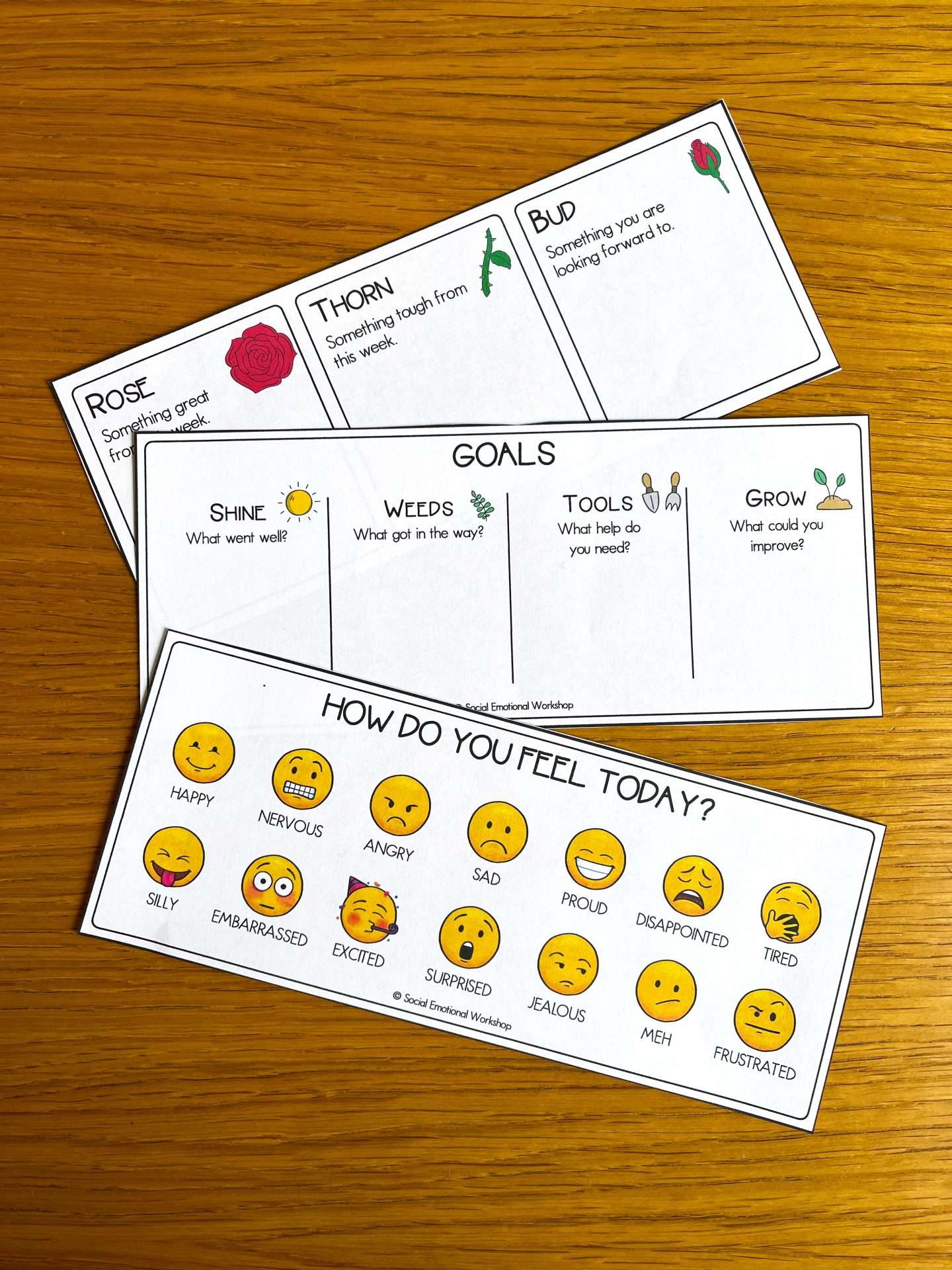As the year gets into it's rhythm, we often lose the opportunities to check-in with students. I'm sure there have been times that you have wondered how your students are feeling or what they are thinking. Incorporating a daily student check-in activity or question is a great way to keep those connections open.
Check-ins communicate that what you feel and think is important. And that as part of a community, someone is going to care. Let's explore 10 ways you can check-in with students. Find one or two that fit your style.
Important Note: If you do student check-in activities, you have to be able to follow-up with any serious student concerns. If a student tells you they are feeling really sad, you have to address that and connect them with a counselor. If a student tells you they hate math and feel stupid, you have to take the time to have a conversation and make a plan. Just as these check-ins communicate that you care about what they feel and think, they can also communicate the opposite if you don't follow-up.
1. Feelings Chart
Use a simple feelings chart to check in with students. I'd advise against this as a public display or a daily routine. Having student rate their feelings in front of peers can cause them to focus on the negative or feel how their friend is feeling. They may rate overly positive and overly negative and this exercise becomes less about checking in.
2. Morning Meeting
Morning meeting is a perfect time to incorporate a check-in. A few times a week you can make your share question focused on what the students are thinking. For example, what did you think about the assembly today? What do you think is the best month of the year?
3. Student Survey
My first year, a teacher gave her students a survey at the beginning, middle and end of the year. She asked questions about what they were feeling and thinking about school. It was really eye opening for her to be able to see all the information at once. Students also shared more information and deeper information as the year went on. As they trusted their teacher, they were willing to tell her what was and wasn't working for them.
You could ask questions like:
- What has been the most challenging thing this year?
- What is something, small or big, you did this year that made you feel proud?
- If you could change one thing about school what would it be?
- Is there something in class that doesn't seem fair to you?
- When can you focus the best? What is the room like?
- How has someone in class encouraged you?
4. Rose - Thorn - Bud
A rose - thorn - bud activity is a quick three-part check-in you can use to have students tell you about their week.
- Rose - a small win or accomplishment
- Thorn - a challenge they faced
- Bud - something they are looking forward to
5. Aha! Moment
An Aha Moment is when a student learned something new or something clicked. You can do these at the end of the day or you could have an Aha! box that students can write down their Aha! moments at any time during the week. You can share them during a class meeting and see if anyone else had the same Aha! moment.
6. Rewind / Do Over
This is a great way to incorporate reflection into your routines. Ask students if there was something about their day or week that they would do over again. If they could press the rewind button and start fresh, what would they do differently.
8. Check-Out
Just as you want to see where students are at when they come into you room, it is also helpful to understand how they are when they leave you room. You can use a simple exit ticket for students to tell what they think about their day. This may be a good time to use a the rose-thorn-bud structure.
9. Self Care Check-In
From time to time, check in with students about their self-care. Are they getting enough sleep, eating well, having some physical activity.
You can introduce self care skills with this free set of worksheets.
10. Goals
You can do check-ins with students around their learning and behavior and have them create goals. Once they have a set of goals, you can check in with them on their progress.
Check out this SMART Goals resource for whole class lessons and check-in materials.
Getting Started with Student Check-Ins
Pick one or two check-ins that you think would fit your classroom culture. Decide when you are going to use them. I hope it helps you connect with students and learn what they feel, think, and need.
Do you have a check-in you do with students? Share in the comments below.








Thanks for sharing this.
Thank you so much for these ideas. It's wonderful!
My pleasure! Thanks for reading!